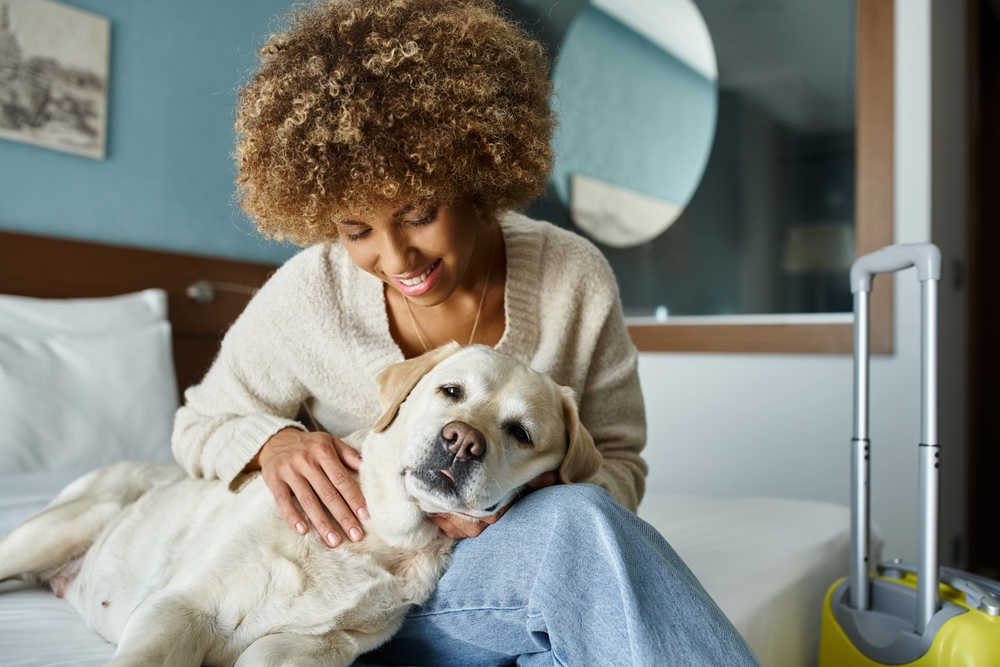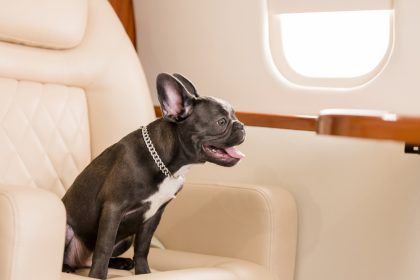Airplane travel can be stressful for dogs and their owners. Ensuring a smooth journey begins with understanding the specific requirements set by airlines. Every airline has different regulations regarding pet travel. Some airlines allow small dogs in the cabin, while others require pets to be transported in the cargo hold. It’s crucial to check with the airline well in advance to know their policies on pet travel. This includes understanding the type of carrier required, weight limits, and any health certificates needed.
Choosing the right carrier
The next essential step is selecting an appropriate carrier. The carrier should be spacious enough for your dog to stand, turn around and lie down comfortably. It should also be well-ventilated and secure. For cabin travel, the carrier must fit under the seat in front of you. It’s advisable to introduce the carrier to your dog weeks before the flight, allowing them to get accustomed to it. Placing familiar items — like their favorite blanket or toy — inside the carrier can help make it a more inviting space.
Health check and vaccinations
Before traveling, a visit to the veterinarian is a must. Ensure your dog is up-to-date on vaccinations and obtain a health certificate if required by the airline. Some destinations may have specific health requirements or quarantine regulations, so it’s essential to research these in advance. Discuss with your vet if your dog has any health concerns that might make air travel risky. They might also suggest ways to help keep your dog calm during the journey.
Training and acclimatization
Training your dog for travel is another key step. If your dog is not used to being in a carrier, start by getting them used to spending time inside it. Gradually increase the duration they spend in the carrier, and take short trips to help them get accustomed to the movement and sounds of travel. Rewarding your dog with treats and positive reinforcement can help make the experience more pleasant. Familiarizing your dog with the sights and sounds of an airport environment can also be beneficial.
Feeding and hydration
Proper feeding and hydration are crucial for your dog’s comfort during the flight. It’s recommended to feed your dog about four hours before the flight to prevent them from feeling uncomfortable. Avoid giving them water right before the flight, but ensure they are well-hydrated in the hours leading up to travel. Some airlines allow the use of spill-proof water bowls inside the carrier. Consult with the airline and bring along an appropriate water source for your dog.
Comfort and security
Making your dog feel secure and comfortable during the flight is essential. Placing a familiar item like a blanket or toy in the carrier can provide comfort. Avoid sedating your dog unless advised by a veterinarian, as sedation can have adverse effects at high altitudes. Instead, use natural calming aids like pheromone sprays or calming collars, which can help reduce anxiety without the risks associated with sedation.
Checking in and boarding
On the day of travel, arrive at the airport early to allow ample time for check-in and security procedures. Inform the airline staff that you are traveling with a dog, as they may have specific instructions or assistance to offer. Keep your dog in the carrier and avoid letting them out in the airport to prevent any accidents or escape attempts. Remain calm and composed, as dogs can pick up on their owner’s anxiety, which can affect their behavior.
In-flight care
During the flight, keep an eye on your dog without constantly disturbing them. If traveling in the cabin, check on them periodically to ensure they are comfortable and calm. For dogs traveling in cargo, communicate with the flight attendants about the conditions in the cargo hold and any special instructions. Some airlines have live animal tracking services, allowing you to monitor your pet’s status throughout the journey.
Postflight care
Once you arrive at your destination, prioritize your dog’s needs. Offer them water and take them for a walk to relieve themselves and stretch their legs. Monitor them closely for any signs of stress or discomfort, and provide them with a quiet, comfortable space to rest. Traveling can be exhausting for pets, so allow them time to recover and adjust to the new environment.
Emotional triggers and bonding
Air travel can be a stressful experience for dogs, and it’s important to provide emotional support throughout the journey. Speak to your dog in a calm, reassuring tone, and use positive reinforcement to reward good behavior. The bond between you and your dog can significantly impact their travel experience. Ensuring they feel safe and loved can help mitigate anxiety and make the journey more bearable.
Getting your dog ready for air travel
Preparing your dog for airplane travel involves careful planning and attention to detail. From understanding airline requirements to ensuring their comfort and safety during the flight, each step is crucial. By following these essential tips, you can help make the journey as stress-free as possible for your furry friend. Remember, a well-prepared trip not only ensures your dog’s well-being but also makes the travel experience more enjoyable for both of you. Safe travels!
This story was created using AI technology.













